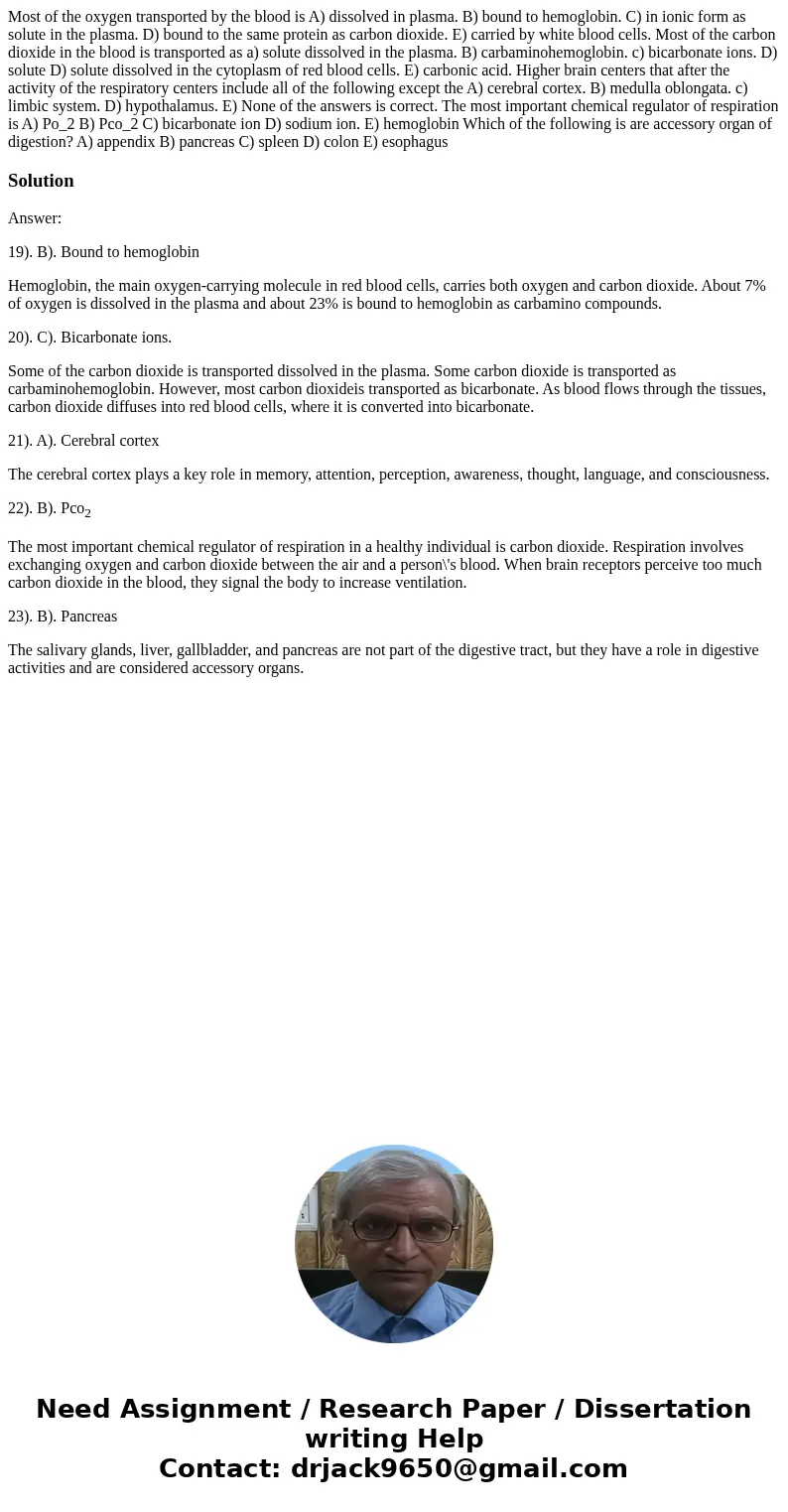Most of the oxygen transported by the blood is A dissolved i
Solution
Answer:
19). B). Bound to hemoglobin
Hemoglobin, the main oxygen-carrying molecule in red blood cells, carries both oxygen and carbon dioxide. About 7% of oxygen is dissolved in the plasma and about 23% is bound to hemoglobin as carbamino compounds.
20). C). Bicarbonate ions.
Some of the carbon dioxide is transported dissolved in the plasma. Some carbon dioxide is transported as carbaminohemoglobin. However, most carbon dioxideis transported as bicarbonate. As blood flows through the tissues, carbon dioxide diffuses into red blood cells, where it is converted into bicarbonate.
21). A). Cerebral cortex
The cerebral cortex plays a key role in memory, attention, perception, awareness, thought, language, and consciousness.
22). B). Pco2
The most important chemical regulator of respiration in a healthy individual is carbon dioxide. Respiration involves exchanging oxygen and carbon dioxide between the air and a person\'s blood. When brain receptors perceive too much carbon dioxide in the blood, they signal the body to increase ventilation.
23). B). Pancreas
The salivary glands, liver, gallbladder, and pancreas are not part of the digestive tract, but they have a role in digestive activities and are considered accessory organs.

 Homework Sourse
Homework Sourse